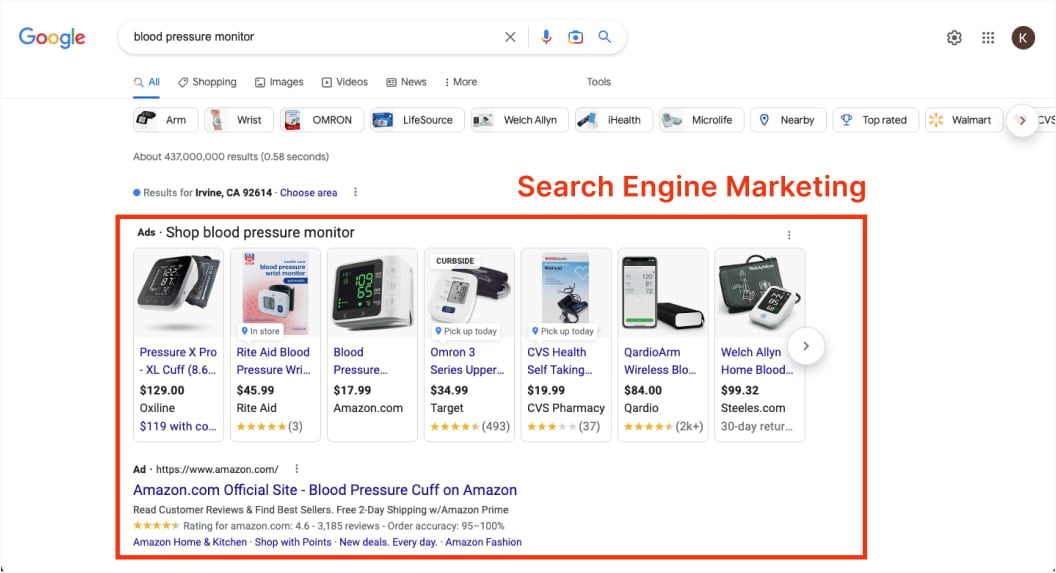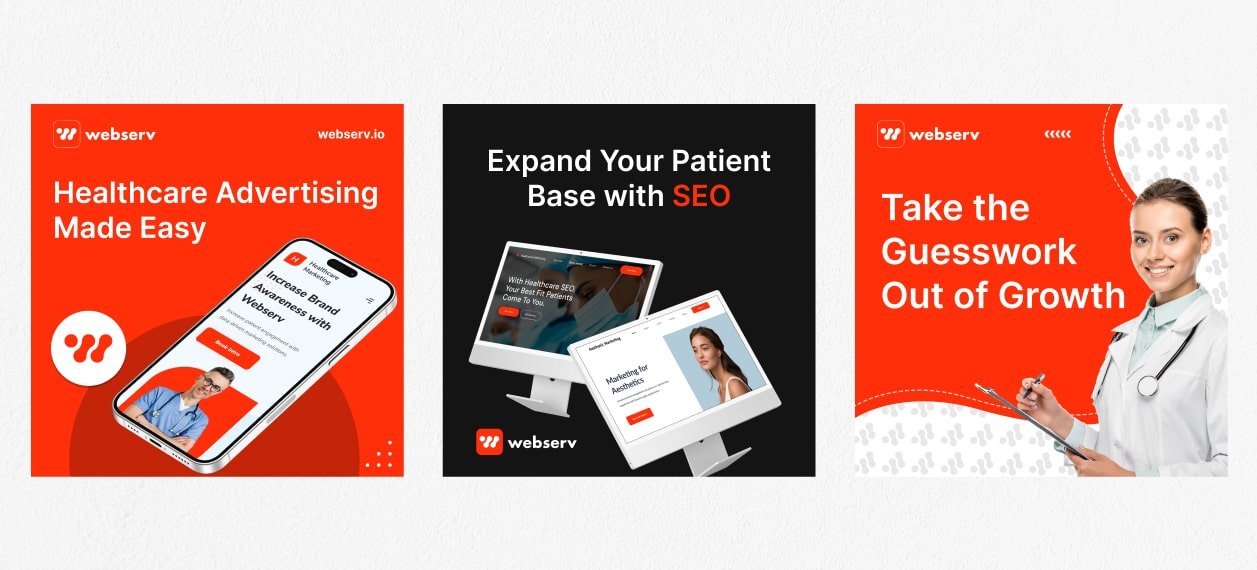
Healthcare providers face intense competition for patient attention. With an increasing number of healthcare options available, it’s more important than ever for healthcare providers to invest in effective advertising strategies to reach and engage their target audience.
Advertising platforms and channels play a critical role in the success of healthcare marketing campaigns. From search engine marketing to social media advertising, display, and programmatic advertising to video and OTT/CTV advertising, there is a multitude of options available to healthcare providers.
But with so many different platforms and channels to choose from, it can be overwhelming to know where to start. This guide will provide a comprehensive breakdown of the different healthcare advertising platforms and channels, with practical tips on how to leverage each one for optimal results. Whether you’re a new healthcare provider looking to build your patient base, or an established provider seeking to expand your reach, this guide will help you navigate the complex world of healthcare advertising and reach your target audience effectively.
If you’re looking to attract potential patients who are actively searching for healthcare services online, SEM is an effective way to do so. SEM involves placing paid ads on search engine results pages (SERPs) for specific keywords that are relevant to your healthcare practice.
SEM involves bidding on specific keywords that your target audience might use to find healthcare services. When someone types in one of your keywords in the search engine, your ad appears at the top or bottom of the SERP. You only pay when someone clicks on your ad, which is known as pay-per-click (PPC) advertising.

Google, which has its own advertising network called Google Ads, is the most used search engine for search engine marketing (SEM). Another well-liked SEM tool to take into account is Bing Ads. These platforms give you the ability to design and manage your advertising, set your budget, and target particular audiences based on things like location and demographics.
One of the major benefits of SEM is that it enables you to connect with potential patients who are actively looking for medical services, which increases the likelihood that they will become clients. You can more successfully contact your ideal patients by using SEM to target particular audiences based on their geography, interests, and other characteristics.
Some more advantages of SEM are:
With over 4.26 billion social media users worldwide, social media advertising is a powerful way to reach potential patients where they spend their time online. Social media advertising includes both paid social media ads and social media influencer marketing.
Below are some examples of Social Media Ads we have run in the past.

Some popular social media advertising platforms include:
Social media platforms are constantly evolving, so it’s important to stay up-to-date with new features and trends to make the most out of your social media advertising efforts. By leveraging the right platforms and creating engaging, relevant content, healthcare providers can attract new patients and build brand awareness on social media.
Social media advertising offers healthcare providers a powerful way to reach potential patients where they spend their time online. By leveraging popular social media platforms and creating engaging, relevant content, healthcare providers can increase their brand awareness, attract new patients, and build lasting relationships with their audience. In this section, we’ll explore the advantages of social media advertising and how it can help you achieve your marketing goals.
The placement of advertisements on websites, mobile apps, and other digital channels is referred to as display and programmatic advertising. These ads can take many forms, including banner ads, native ads, and retargeting ads.
Display advertising entails displaying advertisements on websites or other digital channels. These ads can take many forms, including banner ads, native ads, and retargeting ads. Ads that retarget users who have previously interacted with your website or other digital content are known as retargeting ads.
Programmatic advertising is a type of display advertising that targets specific audiences in real time using automated bidding systems and machine learning algorithms. Because it allows you to target specific audiences more precisely and at a lower cost, programmatic advertising can be more effective than traditional display advertising.
The Video below from Google Digital Garage provides an overview of display advertising and how it can help advertisers target specific audiences more effectively.
Video advertising involves creating and promoting ads through video content on digital channels such as social media platforms, streaming services, and video-sharing websites. Video ads can be displayed before, during, or after video content and can come in various formats such as pre-roll, mid-roll, and post-roll ads.
Video advertising comes in various formats, such as pre-roll, mid-roll, and post-roll ads. Pre-roll ads play before a video and typically have a duration of 15-30 seconds, while mid-roll ads play during a video and post-roll ads play after a video. Each format has its own advantages and disadvantages, and the right choice depends on the specific goals and target audience of the healthcare provider. For example, pre-roll ads can be effective for building brand awareness, while mid-roll ads can be better for promoting products or services during longer videos.
Healthcare providers have a variety of video advertising platforms to choose from, each with its own strengths and limitations. Some popular video advertising platforms for healthcare providers include:
Other platforms such as Instagram, TikTok, and Snapchat also offer various video ad formats and targeting options to reach younger audiences. The right platform for a healthcare provider depends on their target audience and campaign goals.

Advertisements displayed on internet-connected TV devices such as smart TVs or streaming devices are referred to as over-the-top (OTT) or connected TV (CTV). These ads can come in a variety of formats, including pre-roll, mid-roll, and post-roll ads.
OTT advertising is video advertising delivered over the internet via streaming services like Hulu, Netflix, and Amazon Prime. In contrast, CTV advertising refers to video advertising delivered over the internet via internet-connected TV devices such as smart TVs or streaming devices.
At Webserv, we understand that digital marketing in the healthcare industry can be a challenge. That’s why we specialize in providing tailored digital marketing solutions for healthcare providers. Our team of experienced professionals can help you navigate the complex landscape of healthcare advertising platforms and channels, and develop customized strategies that are designed to achieve your business goals.
If you’re looking for a reliable and experienced healthcare digital marketing agency that can help you drive more patients to your practice, we’d love to chat. Book a meeting with us today to learn more about our services and how we can help you achieve your digital marketing goals.
We also recommend checking out some of our other healthcare articles such as, The Power of Content Creation and Healthcare Brand Strategy.
Healthcare Marketing Platforms and Channels refer to the various digital tools and platforms used by healthcare organizations to promote their services, products, and brands to potential patients or clients. These platforms and channels can include websites, social media platforms, search engines, email marketing, and digital advertising.
The benefits of using Healthcare Marketing Platforms and Channels are numerous. These tools and channels allow healthcare organizations to reach a wider audience, increase brand awareness, drive more traffic to their websites, and generate more leads and revenue. By leveraging the power of digital marketing, healthcare organizations can also track the effectiveness of their campaigns and adjust their strategies as needed.
There are several effective Healthcare Marketing Platforms and Channels that can help healthcare organizations to reach their target audience. Some popular platforms include social media platforms like Facebook, Twitter, and LinkedIn, search engines like Google and Bing, email marketing, and digital advertising through platforms like Google Ads and Facebook Ads.
Healthcare organizations must be vigilant in ensuring their marketing efforts comply with regulations such as HIPAA and FDA guidelines. To achieve this, healthcare organizations should work closely with their marketing teams to develop clear policies and procedures for their marketing efforts. It is also important to have a compliance officer on staff who can review marketing materials and ensure they are compliant with all applicable regulations.
Measuring the success of a healthcare organization’s marketing campaigns is critical to refining and optimizing their strategies. Healthcare organizations can use metrics such as website traffic, lead generation, and social media engagement to track the effectiveness of their campaigns. It is also important to establish clear goals and objectives for each campaign, so the success can be measured against those specific goals. Additionally, tools such as Google Analytics can provide detailed insights into user behavior on a website, allowing healthcare organizations to further optimize their marketing efforts.
